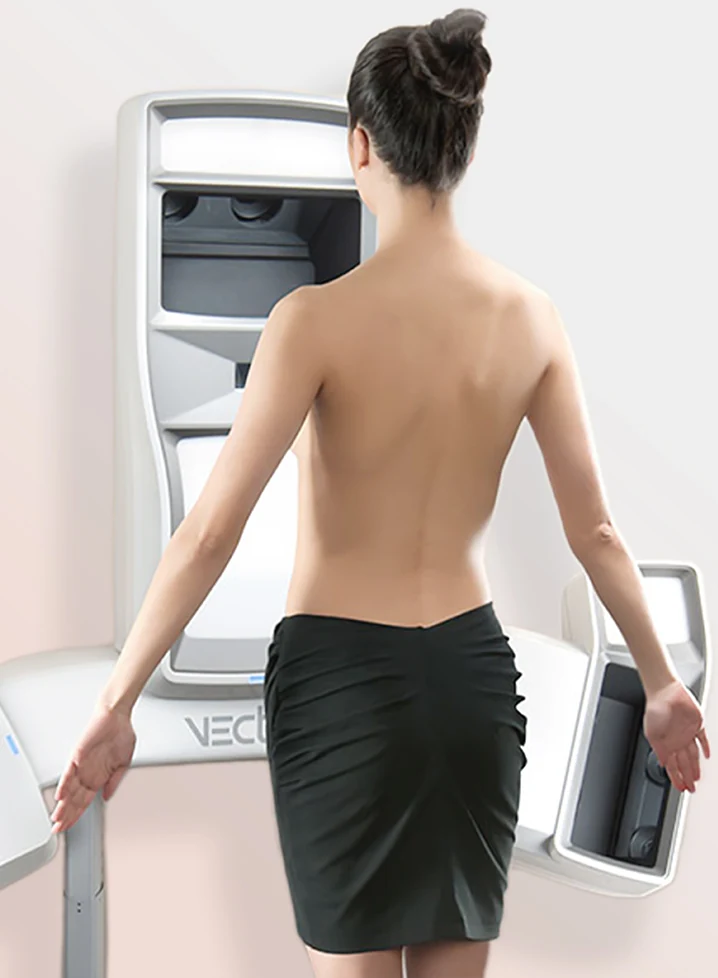
Breast Lift
Over time, factors such as gravity, pregnancy, genetics, significant weight loss, and simply the natural process of aging can lead to reduced breast skin elasticity and the development of loose, excess skin. For many women, these effects may cause undesirable breast drooping/sagging, as well as a loss of self confidence. Breast lift surgery performed by New York plastic surgeon Dr. Stafford Broumand removes excess skin and reshapes and elevates the breasts for a more youthful contour and projection.
What is a Breast Lift?
Breast lift surgery, or mastopexy, is a plastic surgery procedure performed to elevate and rejuvenate the breasts by removing excess skin and reinforcing surrounding tissue to create a more uplifted breast profile.
Breast lift surgery raises the breasts to a more youthful position, but it does not change breast shape, size, or volume. For this reason, many of Dr. Broumand’s patients in the New York area choose to combine their breast lift with breast augmentation or breast reduction surgery
Trusted Source
Breast Lift
American Society of Plastic Surgeons
Go to Source
.
Benefits of Breast Lift Surgery
In addition to lifting the breasts to restore a more youthful, “perkier” aesthetic, mastopexy can be customized to address a number of other concerns to further enhance the appearance of the breasts. Depending on your unique needs and goals, breast lift surgery can generally help:
- Elevate the breasts to correct drooping/sagging
- Tighten/eliminate excess breast skin
- Reshape breast tissue for an improved contour
- Raise the nipple-areolar complex to a more natural position
- Reduce the size of the areola
Who is a Candidate for Breast Lift Surgery?
If you are unhappy with the appearance of your breasts and would like them to appear more lifted, you may be a good candidate for breast lift surgery. In general, a candidate for mastopexy:
- Is in good overall health
- Does not smoke
- Is at a stable weight
- Has realistic expectations about what can be achieved through plastic surgery
Trusted Source Who is a good candidate for breast lift surgery? American Society of Plastic Surgeons Go to Source
Breast Lift Techniques
During your breast lift consultation, Dr. Broumand will evaluate the degree of breast drooping, or ptosis, present. This will inform his decision about which breast lift technique is most suitable for your unique anatomy and goals.
Degrees of Breast Drooping
When evaluating breast drooping (ptosis), there are four different classifications. These include:
- Glandular Ptosis or Pseudoptosis: Breast tissue droops lower than the inframammary crease, but the position of the nipple-areolar complex remains above the crease.
- Grade I Ptosis: Both breast tissue and the nipple-areolar complex sag slightly lower than the inframammary fold.
- Grade II Ptosis: Both breast tissue and the nipple-areolar complex droop considerably lower than the inframammary crease.
- Grade III Ptosis: Considered the most significant form of breast drooping, the nipple-areolar complex is at the lowest point of the sagging breast, often facing completely downward.
As a highly experienced plastic surgeon, Dr. Broumand has mastered all traditional breast lift techniques, which include:
- Benelli Mastopexy: The incision is made in a circle around the perimeter of the areola. This type of breast lift is sometimes referred to as a periareolar lift or “donut” breast lift, and is best suited for patients with minimal breast sagging.
- Vertical or “Lollipop” Mastopexy: This is the most common type of breast lift, and involves an incision made around the outer edge of the areola and continues vertically down the underside of the breast crease (forming the shape of a lollipop).
- Anchor or Inverted “T” Mastopexy: The anchor breast lift, or inferior pedicle breast lift, is best for patients with significant ptosis or breasts that are very large or saggy. The incision encircles the areola, continues down the breasts, and continues along the inframammary fold (resembling the shape of an anchor). An added benefit of the anchor breast lift technique is that patients are very likely to maintain good sensation of the nipples, areolae, and surrounding breast tissue.
Trusted Source Reduction mammaplasty by the inferior pedicle technique Courtiss EH, Goldwyn RM Go to Source
While each approach can yield excellent results for the right patients, Dr. Broumand generally prefers the vertical (or lollipop) Mastopexy, depending on the individual’s anatomy. He feels this technique allows for optimal lifting and reshaping of the breast tissues, ultimately leading to an exceptional outcome that far outweighs any hesitations patients have in regard to scarring.

Preparing for Breast Lift Surgery
Dr. Broumand believes that an informed patient is a confident patient, which is why he allows so much time for breast lift consultations. Your consultation will take roughly one hour, and there are a number of goals for this appointment:
- To evaluate whether you are a candidate for breast lift surgery
- To determine the best breast lift technique for your needs
- To ensure that you fully understand the procedure, breast lift benefits and risks, and what can reasonably be achieved with breast lift surgery
- To ensure that you feel well-prepared for your surgery and breast lift recovery
During your breast lift consultation, Dr. Broumand will evaluate your health and the results of your last mammogram and conduct a detailed physical examination to determine whether a breast lift (mastopexy) is the ideal option for your aesthetic goals. Emphasizing a collaborative approach, Dr. Broumand will engage in an open dialogue about your medical background to tailor the procedure to your specific needs.



In this session, we leverage the cutting-edge VECTRA® XT system. This revolutionary 3D imaging technology captures a comprehensive image of your body, allowing us to simulate the proposed changes. This visualization assists in setting clear, achievable expectations for the surgical results, enhancing your confidence and satisfaction with the outcome.
Once you and Dr. Broumand have agreed on a treatment plan, our dedicated team will guide you through scheduling your procedure at a time that best suits you.
In preparation for your breast lift, we provide an exhaustive pre-operative checklist designed to optimize your comfort and results. Our recommendations include avoiding aspirin and certain other medications, steering clear of specific vitamins, and incorporating Arnica herbal supplements into your routine. This guidance is aimed at ensuring a smooth, effective treatment and recovery process.
Breast Lift Surgery: What to Expect
Breast lift surgery is performed as an outpatient procedure. On the day of your cosmetic surgery procedure, you will come to the same office you visited for your consultation(s). After greeting you warmly, our staff will get you settled and introduce you to our operating room team, some of whom have worked alongside our plastic surgeon for more than 20 years. Next, Dr. Broumand and our staff will run through the preoperative process and lead you to the operating room to change into your surgery attire, take care of pre-op signatures, and confirm everything is ready to move forward. Throughout this entire process, every bit of focus is centered on ensuring you feel completely safe and as comfortable as possible.
To begin the mastopexy procedure, Dr. Broumand will employ the incision pattern that was predetermined during the consultation. Once this incision has been made, excess skin is removed, and breast tissues are internally shaped and elevated to a higher position on the chest wall. When the desired contour and position is achieved, excess skin is pulled taut and carefully reattached beneath the breast crease. Performed under general anesthesia, the mastopexy procedure takes about two hours to complete, but this timeframe may be extended for individuals who are receiving a breast lift with implants.
Once breast lift surgery is complete, you should wake up feeling extremely well, similar to waking from a restful nap. Our operating room team and board-certified anesthesiologist will be there to greet you, and they will aid you in walking to a recovery room under your own power while helping to make sure you are free of any pain. You will remain in this recovery room for approximately one hour, and once our staff ensures you are comfortable enough to return home, they will get in touch with a friend or family member to pick you up and take you back home the same day
Trusted Source
Breast Lift
Cleveland Clinic
Go to Source
.

Breast Lift Recovery & Results
Following mastopexy surgery, your surgeon will call in the evening to ensure you feel well and answer any questions you may have. Moving forward, follow-up visits are typically scheduled for one week, two weeks, three weeks, four weeks, six weeks, three months, six months, and one year after the procedure.
You will need to wear a surgical bra during your breast lift recovery period. Some degree of swelling, bruising, and/or numbness in the nipples and breasts may be experienced – though these symptoms should subside over the first few weeks after breast lift surgery. Any potential discomfort or soreness can generally be managed with pain medication, and the majority of patients are able to resume normal, non-strenuous routines after approximately one week. That said, Dr. Broumand typically advises that you refrain from any rigorous exercise or strenuous physical activities for several weeks to help ensure proper healing and ideal, long-term outcomes.
You will notice that your breasts appear perkier nearly immediately after your procedure, but it will take some time before swelling fully subsides and you can see the full results
Trusted Source
What results should I expect after my breast lift surgery?
American Society of Plastic Surgeons
Go to Source
.
How much does a breast lift cost?
The cost of breast lift surgery (or any cosmetic surgery procedure) is dependent upon a patient’s unique treatment plan. You will be fully informed about the cost of your procedure before the day of your surgery.
Can I combine breast lift surgery with other procedures?
Yes. For patients who wish to alter the size and/or shape of their breasts or breast volume in addition to elevating them to a more youthful appearance, Dr. Broumand combines breast lift surgery with breast implants or breast reduction. Breast lift is also frequently performed as part of a Mommy Makeover or post-weight loss body contouring treatment plan.
Will I be able to breastfeed after my breast lift procedure?
While it is possible for many women to breastfeed after a breast lift, Dr. Broumand usually recommends that women wait until they are done breastfeeding to undergo this plastic surgery procedure.
What will my scars look like after my breast lift?
You will have some scarring after your breast lift, and their location will depend on the surgical technique and incisions you and Dr. Broumand decide on. Due to our doctor’s meticulous surgical technique, any residual scarring from surgery should become relatively inconspicuous over time.
What are the risks of breast lift surgery?
The best way to achieve a favorable outcome from mastopexy surgery is to entrust your care to an experienced, board-certified plastic surgeon like Dr. Broumand. There are risks and complications associated with any surgical procedure. Breast lift risks include:
- Asymmetrical results
- Changes in breast or nipple sensation
- Unfavorable changes in the appearance of the nipples or areola
- Breastfeeding complications
Trusted Source Breast Lift Mayo Clinic Go to Source .
Contact Us
If you live in the NYC or Manhattan area and are considering breast lift surgery, contact us to schedule a consultation with Dr. Stafford Broumand, a leading New York plastic surgeon.

1 American Society of Plastic Surgeons. Breast Lift. Available: https://www.plasticsurgery.org/cosmetic-procedures/breast-lift. Accessed January 17, 2024.
2 American Society of Plastic Surgeons. Who is a good candidate for breast lift surgery? Available: https://www.plasticsurgery.org/cosmetic-procedures/breast-lift/candidates. Accessed January 17, 2024.
3 Courtiss EH, Goldwyn RM. Reduction mammaplasty by the inferior pedicle technique. An alternative to free nipple and areola grafting for severe macromastia or extreme ptosis. Plast Reconstr Surg. 1977 Apr;59(4):500-7. PMID: 847026. Available: https://pubmed.ncbi.nlm.nih.gov/847026/. Accessed January 17, 2024.
4 Cleveland Clinic. Breast Lift. Available: https://my.clevelandclinic.org/health/treatments/23298-breast-lift. Accessed January 17, 2024.
5 American Society of Plastic Surgeons. What results should I expect after my breast lift surgery? Available: https://www.plasticsurgery.org/cosmetic-procedures/breast-lift/results. Accessed January 17, 2024.
6 Mayo Clinic. Breast Lift. Available: https://www.mayoclinic.org/tests-procedures/breast-lift/about/pac-20393218. Accessed January 17, 2024.
Dr. Stafford Broumand has reviewed and approved this content.



